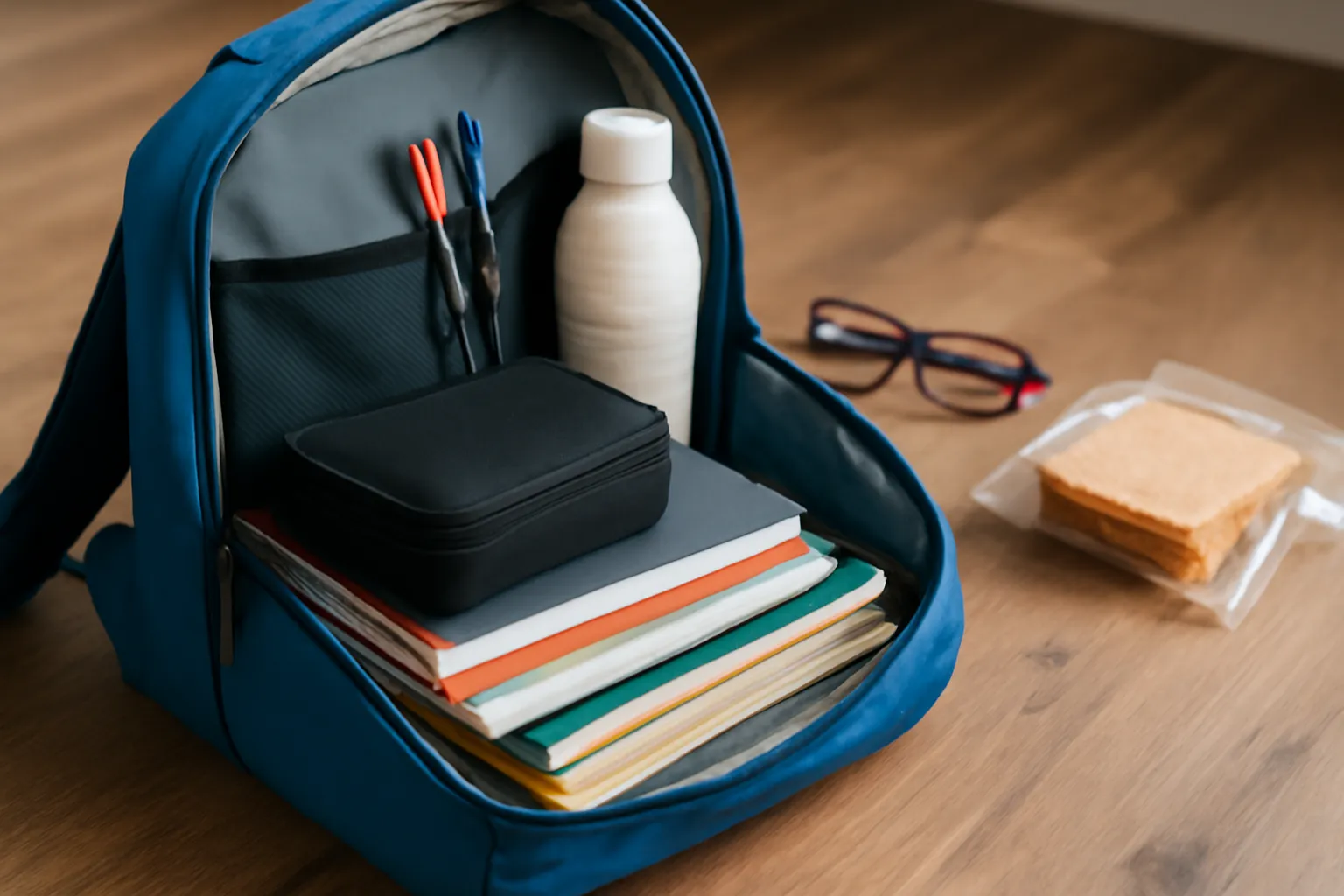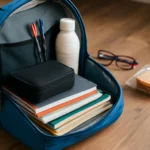Keeping an elementary school bag organized is crucial for young students as it helps improve their focus, reduces stress, and fosters responsibility. Not only does it ease their daily routine, but it also ensures that they carry everything they need without overloading themselves. In this guide, we’ll explore how to effectively organize an elementary school bag, the recommended items for elementary school students, and how to manage bag weight.
Recommended for Elementary School Students
When selecting items for an elementary school student’s bag, the key is to ensure that everything is necessary for their daily tasks while keeping things simple. Here’s a list of essential items:
-
Textbooks and Notebooks Only pack the books and notebooks needed for the day. Having a separate compartment for each subject helps in finding them quickly.
-
Pencil Case A pencil case is essential for keeping pens, pencils, erasers, and sharpeners organized. You can also include a small ruler and highlighter.
-
Water Bottle Stay hydrated! A spill-proof, reusable water bottle helps avoid messes.
-
Snacks A small snack box is a great idea for a mid-morning break. Simple, healthy snacks like fruits or crackers are ideal.
-
Personal Items Eyeglasses, a hand sanitizer, and tissues should be kept in smaller pouches or side pockets to avoid clutter.
By sticking to a specific set of items, your child won’t have to deal with unnecessary clutter and can focus on what’s important. To make it even easier, use color-coded folders or pouches to organize different subjects.
Search for more organization tips
How to Organize Elementary School Bags
Proper organization of a school bag can make a big difference. Here are a few steps to follow:
-
Separate Compartment for Each Item Keep textbooks, notebooks, and stationary in different sections. This will help students quickly grab what they need without digging through everything.
-
Use Pockets and Pouches Utilize smaller pockets for items like pens, erasers, or small personal items like keys or tissues. A separate pouch for a water bottle will prevent spills.
-
Keep Snacks in a Separate Section Snacks and food should be kept in a separate zip-lock bag to avoid squashing them under books.
-
Check for Unnecessary Items At the end of the week, have the child clean out their bag to remove things they no longer need, like old papers or broken items.
-
Consider a Backpack with Multiple Sections A backpack designed with various compartments allows for better organization and even weight distribution.
Having a consistent routine for checking and packing the bag will help the child stay organized. Encouraging them to do this independently is a great way to teach responsibility.
Find backpack models with good organization
Elementary School Bag Weight
Bag weight is a concern for young students, as it can impact their posture and health over time. The general recommendation is that a child’s backpack should weigh no more than 10-15% of their body weight. Here’s how to keep the bag weight in check:
-
Avoid Overpacking Only include the books, notebooks, and materials needed for that day’s classes. Don’t pack extra items “just in case.”
-
Opt for Lighter Materials Choose lighter backpacks and textbooks. If possible, use digital versions of textbooks or notes to reduce weight.
-
Adjust the Straps Ensure the backpack is well-fitted with adjustable straps that help distribute weight evenly. The bag should rest comfortably on the child’s back, not too high or low.
-
Re-evaluate Frequently As the school year progresses, make sure the weight of the bag remains within safe limits by revisiting what is inside.
It’s important to check the weight regularly and make sure that the bag isn’t causing any discomfort or strain. A properly packed bag is crucial for both organization and health.
Search for tips on reducing backpack weight
Conclusion
Organizing an elementary school bag might seem like a small task, but it can have a significant impact on a child’s daily routine and well-being. By following these tips, students can have an efficient and healthy school experience. Keeping the bag light, organized, and filled only with essentials ensures they carry what they need without feeling overwhelmed. Helping children manage their school bags fosters a sense of responsibility and can even improve their focus and productivity.
Remember, the goal is simplicity, practicality, and comfort. A well-organized backpack not only enhances their learning experience but also promotes a healthy school lifestyle.






